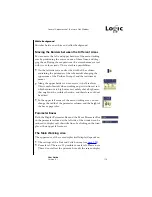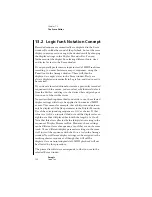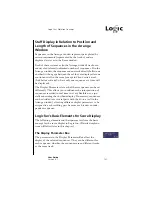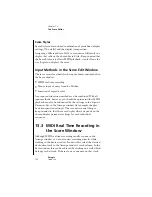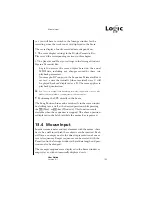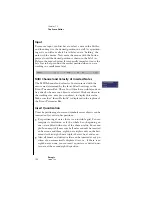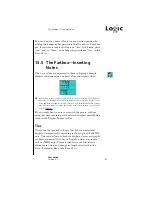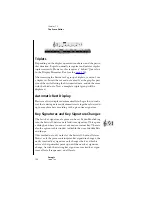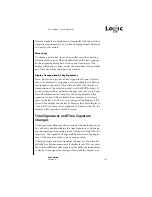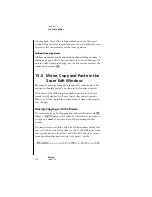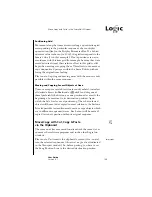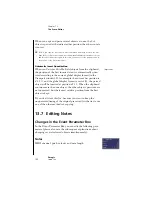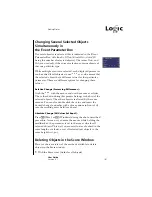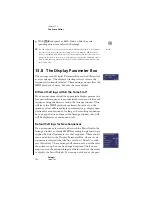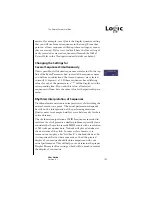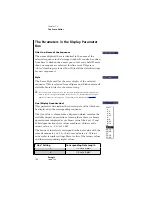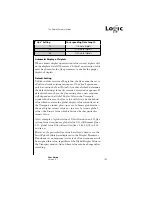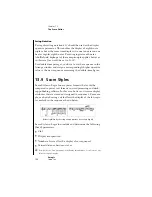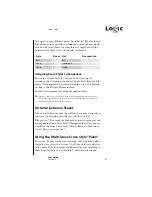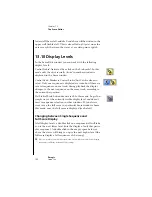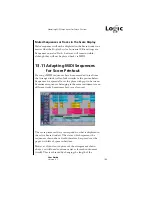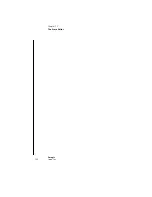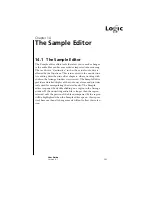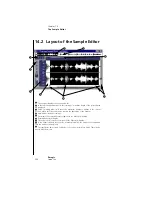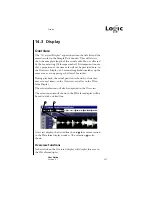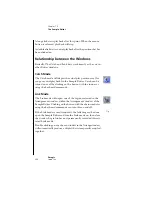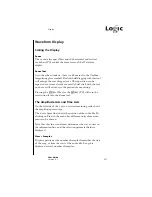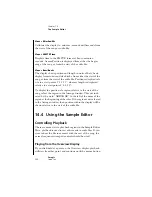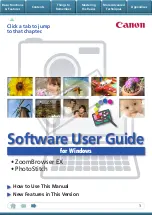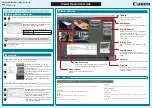
The Display Parameter Box
193
User Guide
Version 4.1
r
meters. (for example, to set Qua to the display quantize setting
that you will use for most sequences in that song) From that
point on, all new sequences will adopt these settings, as soon as
they are created. If Qua is set to default here, the Qua setting of
newly recorded or created sequences will match the Global
Format Value in the Transport window (details see below).
Changing the Settings for
Several Sequences Simultaneously
This is possible, if all desired sequences are selected. In the top
line of the Score Parameter box, instead of the sequence name,
you will see an indication of how many sequences are selected
currently (3 Sequences sel.). If these sequences have differing
values for any of the parameters, a “*“ will be displayed in the
corresponding line. If you edit this value, all selected
sequences will now have the same value for that particular para-
meter.
Rhythmic Interpretation of Sequences
Traditional music notation is an imprecise way of describing the
musical content in a piece. The actual performance depends
heavily on the interpretation of the performing musicians.
Quarter notes for example, hardly ever are held exactly for their
entire duration.
The rhythmic interpretation of MIDI sequences recorded in
real time to a click presents a similar problem, especially if one
considers that Logic fun records MIDI events with a resolution
of 960 ticks per quarter note. Nobody will play a downbeat at
the exact time of the click. In some styles of music, it is
common to even play a bit “laid back”, or behind the beat. So,
it is important that you have some idea of how the printed
display of your music should look in comparison with your
actual performance. This will help you to determine the proper
Display Parameter Box settings, which will do much to control
the display of your music.
Содержание Logic fun
Страница 1: ...E Sof t und Hard wa re Gmb H l User Guide for Logic fun Version 4 1 March 2000 English ...
Страница 2: ......
Страница 6: ......
Страница 8: ...Emagic Logic fun 8 ...
Страница 26: ...22 Chapter 1 Features Emagic Logic fun ...
Страница 38: ...34 Chapter 2 Sound Cards and MIDI Emagic Logic fun ...
Страница 48: ...44 Chapter 3 Getting Started Emagic Logic fun ...
Страница 72: ...68 Chapter 4 MIDI Tutorial Emagic Logic fun ...
Страница 96: ...92 Chapter 5 Using Logic fun Emagic Logic fun ...
Страница 110: ...106 Chapter 6 Transport Functions Emagic Logic fun ...
Страница 140: ...136 Chapter 8 Audio Basics Emagic Logic fun ...
Страница 162: ...158 Chapter 10 Mixer and Effects Emagic Logic fun ...
Страница 174: ...170 Chapter 11 The Event List Emagic Logic fun ...
Страница 206: ...202 Chapter 13 The Score Editor Emagic Logic fun ...
Страница 224: ...220 Chapter 15 Video and MIDI Files Emagic Logic fun ...
Страница 240: ...236 Glossary Emagic Logic fun ...
Страница 256: ...252 Index Emagic Logic fun ...

